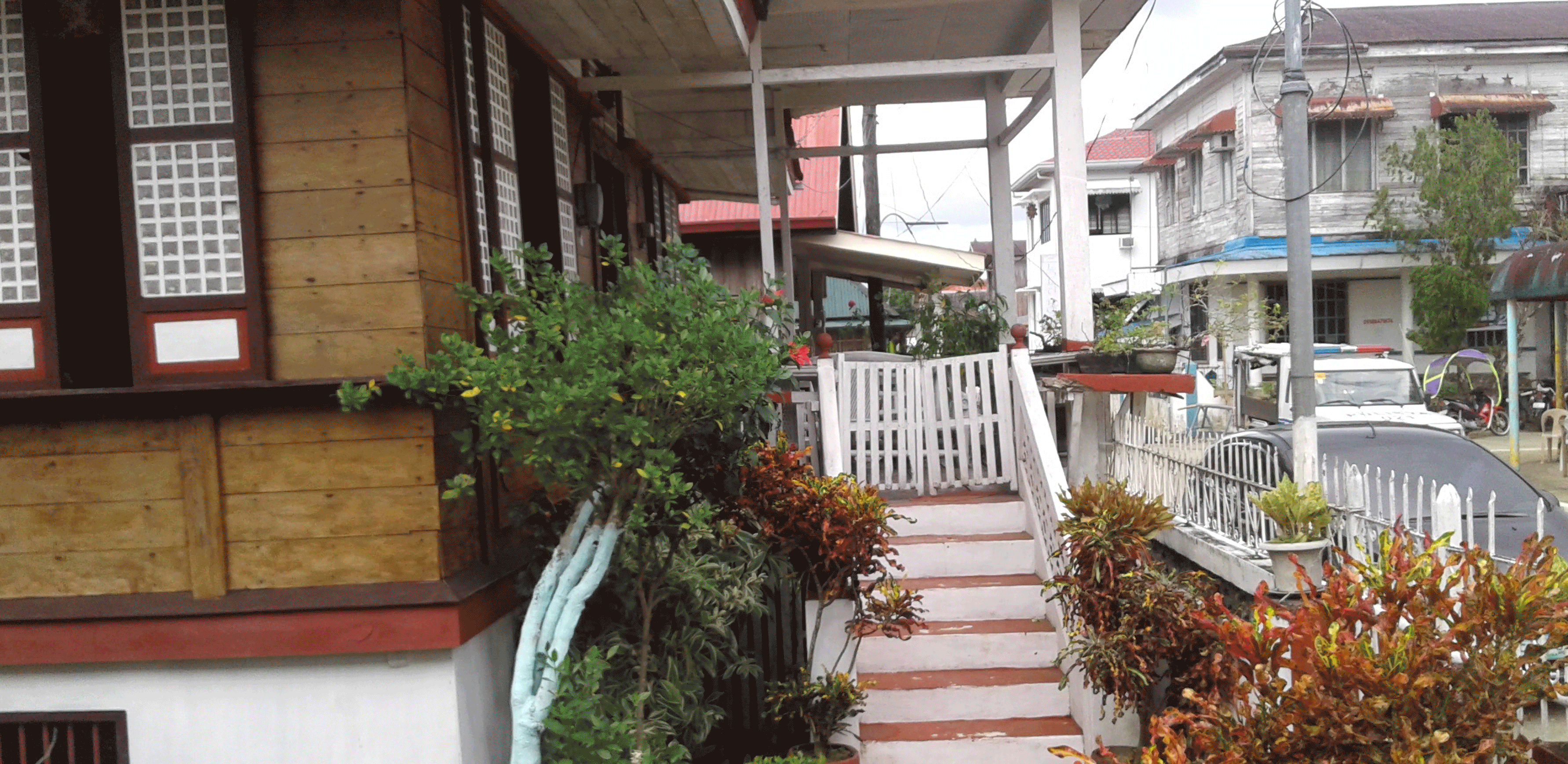






NAME OF IMMOVABLE HERITAGE: DARADAL Residence
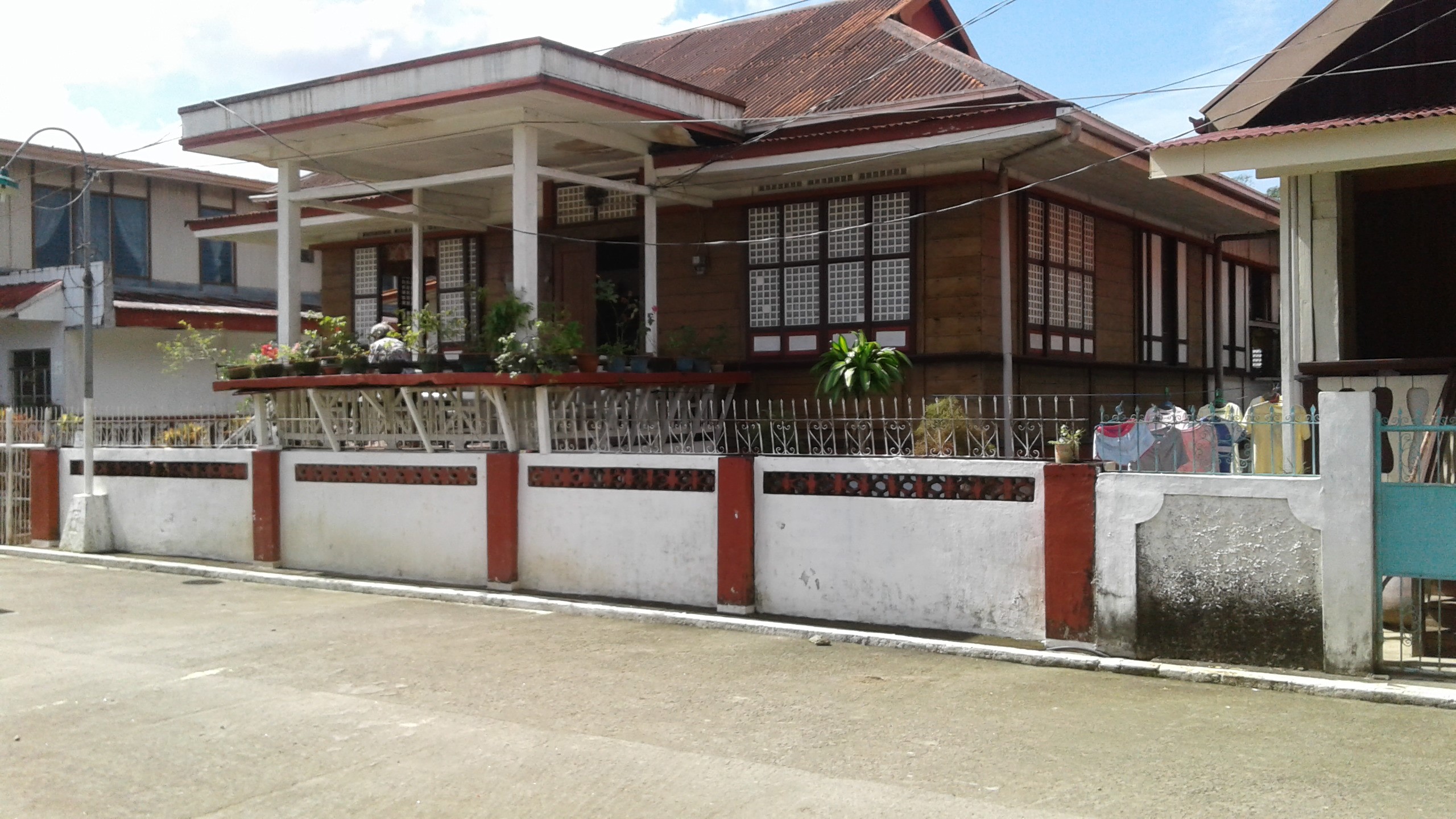
I. BACKGROUND INFORMATION
A. PERIOD:
[ ] INDIGENOUS
[ ] SPANISH PERIOD
[ ] AMERICAN PERIOD
[/] WORLD WAR II PERIOD
[ ] POSTWAR
B. OWNERSHIP [ ] PUBLIC [/] PRIVATE
Owned by the Late Florencio "Pencio" Baculo Daradal and Pacencia Abelido-Daradal
C. ADDRESS/LOCATION/COORDINATES (Longitude & Latitude):
Brgy. 1., San Vicente St., Calbiga, Samar
D. AREA:
1. Total Land Area:
2. Structure:
Approximately 200 sq.m.
E. YEAR CONSTRUCTED/ESTIMATED AGE:
Around 1932, approximately 86 years
F. OWNERSHIP/JURISDICTION:
Privately owned
G. DECLARATION/LEGISLATION:
II. DESCRIPTION
A. Physical Description (Describe the exterior, the interior (the various rooms of the house, the stairs, the floor, the architectural details such as woodcarvings, windows, implements, caryatids and others), and the surrounding landscape and other structure around the house such as the water source/cistern/well, camarin/kamalig, gazebo, and/or pergola).
The house mirrors both simplicity and elegance as it flaunts its charismatic architecture. One look at the house, anyone can tell that it was built several decades ago. Though some renovations were already done by the current house-owners, the original design of the entire structure was restored except for the extensions made at the kitchen. Just like a typical house built in the 1930s, the main floor of the house is elevated at approximately 1 meter from the ground. Underneath, is a storage room which was used to keep the owners' harvested crops. However, with the recent flooding, the said area is now unused and empty. This storage room contains a hard wood board which bears the intricate carvings of the dates "7-2-1932" and "3-4-1934", pertaining to the exact dates when the house was initially built and when extensions were added.
Upon entering the gate, you will be greeted with various ornamental plants which adds adornment to the house. Some of these plants were actually planted in the area during the period of house-construction. Another interesting historical gem found in the area is a deep well which is as old as the house structure. Several interesting stories were mentioned about the deep well.
B. History of the Structure (Write the history of construction, use/function of the building over the years, history of intervention)
The house was initially built in the year 1932, when the couple only had 3 children. But as years go by, extensions were added to the house to accommodate their growing family. The couple had 8 children in total, and the youngest was born in 1943. Therefore, extensions were really deemed necessary - the first extension was added two years after the first part of the house was built.
III. STORIES ASSOCIATED WITH STRUCTURE
During the world war 2, Calbiganons evacuated the town because of tremendous fear from Japanese soldiers' invasion. But with the mandate of the Japanese Officials, Calbiganons were threatened that houses will be burned if house owners will not return right away. Thus, Daradal family went back to town immediately and Japanese soldiers also decided to live with the family and made the house their camp.
Surprisingly, Japanese officials were described to be polite by the house owners. One of the reasons, why they chose to convert the house as a camp is the presence of the Deep Well which gave refreshing water for drinking, cooking, and cleaning needs. It is said, that Japanese soldiers and officials will always crowd in the deep well every afternoon.
IV. SIGNIFICANCE (Indicate type of significance, e.g. historical, aesthetic, economic, social, political, and then explain)
HISTORICAL - The house was converted into a camp by Japanese officials during the world war II, and it also served as classroom sometime in 1956 or 1957.
SOCIAL - the deep well excavated near the house has been a source of drinking water for most Calbiganons since 1940s. It was mentioned by witnesses that the well served as a resting site for Japanese soldiers / officials and it is where they hear playful conversations among the Japanese. Though the language can't be understood well, witnesses can tell that Japanese folks were having fun because of their giggling and raucous discussions. Same thing goes for Calbiganons in the Poblacion, who also made the "atabay" or deep well their main source of potable drinking water.
V. CONSERVATION
A. STATUS/CONDITION OF STRUCTURE:(Describe the physical condition of the structure)
[/] In good condition
[ ] deteriorated
[ ] ruins
Remarks:
Restorations and few alterations were made but most of the architectural design was maintained.
B. INTEGRITY OF THE STRUCTURE:
1. [/] altered 2. [ ] moved
[ ] unaltered [ ] original site
Remarks: A noticeable extension was already made starting from the kitchen.
C. CONSTRAINTS/THREATS/ISSUE:
Flooding
D. CONSERVATION MEASURES: (Describe the conservation measures taken at the level of the community, provincial and/or national)
- the house owners constantly repair the house everytime they see areas which needs restoration.
VI. LIST OF SIGNIFICANT TANGIBLE MOVABLE HERITAGE (within the premises of the built heritage):
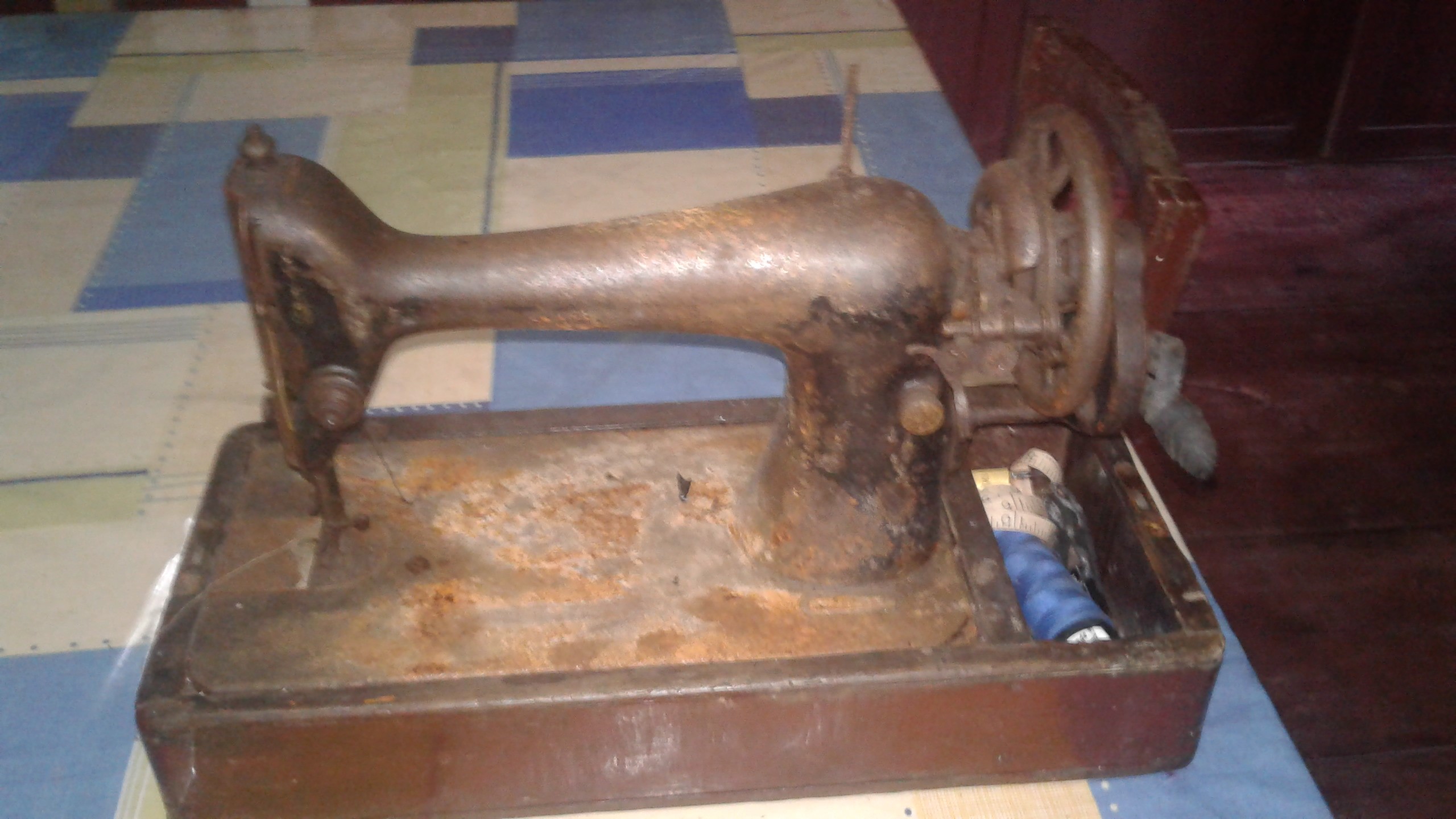
1. Old sewing machine
2. Clock
VII. REFERENCES
KEY INFORMANT/S: Rosario Daradal, 81 y.o / Loreza Daradal-Jumagdao, 87 y.o
REFERENCE:
NAME OF PROFILER/MAPPER: Wenalyn G. Dacut/ Sushmita Marie Rodriguez
DATE PROFILED: May 12, 2018
VIII. APPENDICES
A. One of the children of the late house-owner, Ms. Rosario Daradal.
B. Deep Well constructed since 1942 after the house was built.
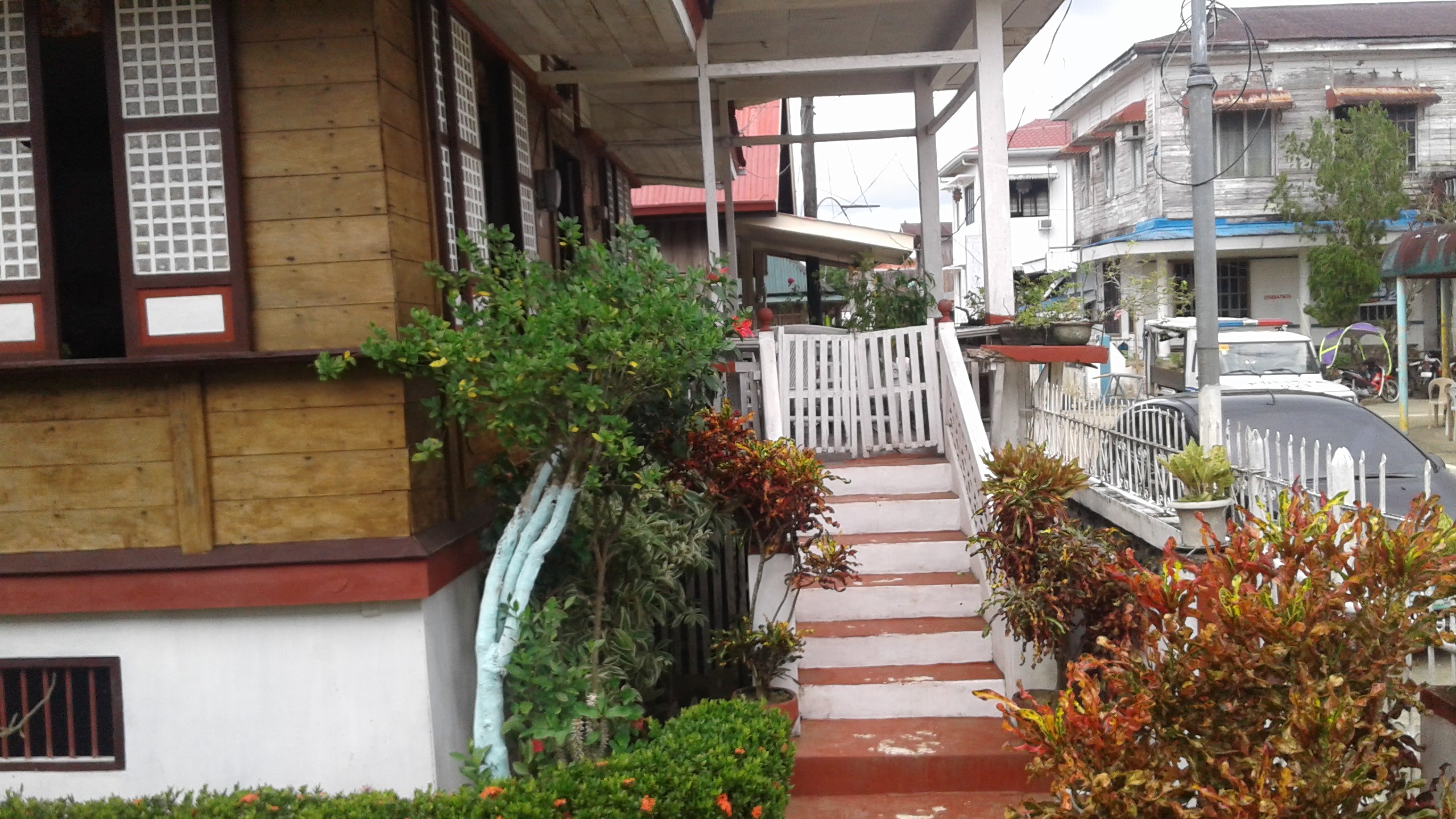
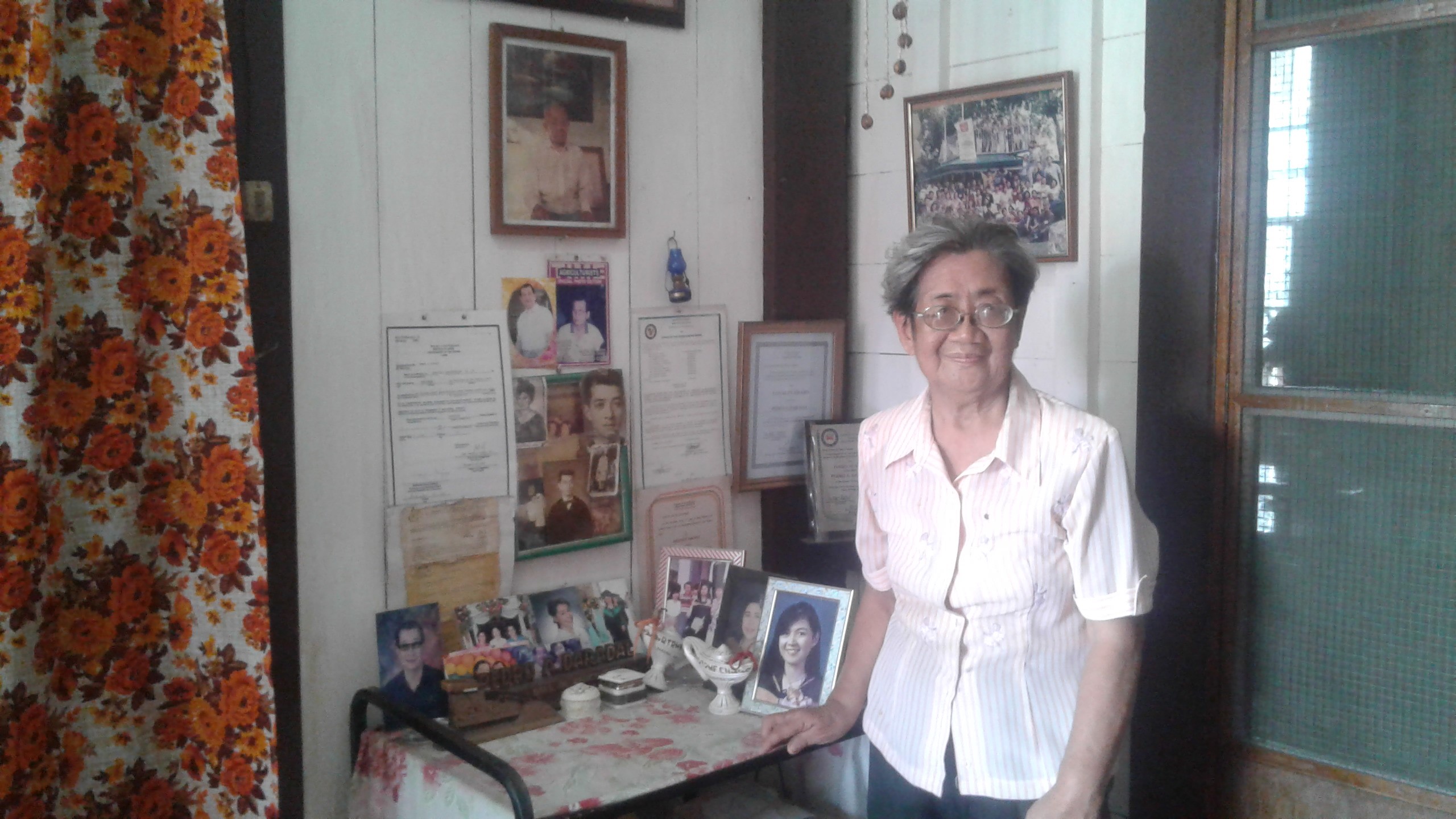

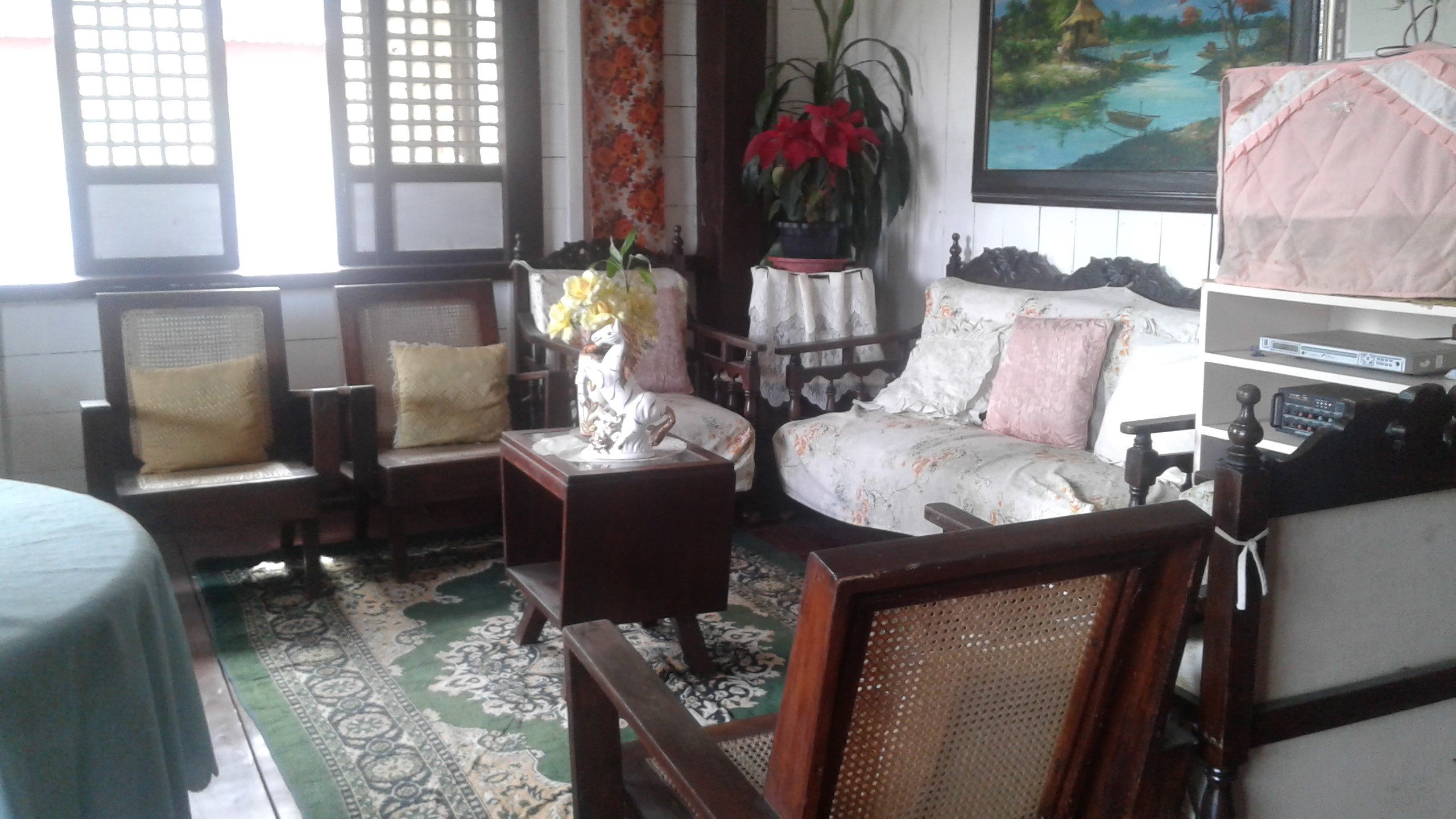

GOVERNMENTS LINKS EMERGENCY NUMBERS CONTACT US
Copyright 2019 City Government Calbiga
________________________________________________________________________________________________________________________________________________________________

-------- ••• Historical ••• --------










MELCHOR F. NACARIO
MUNICIPAL MAYOR
